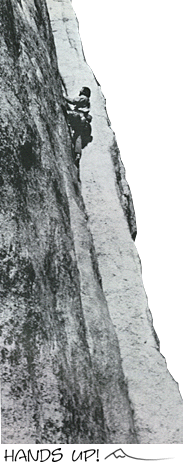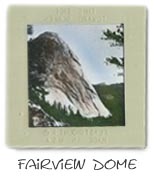|

(Above) Mike Bolte on Fairview Dome. |
While hanging from Fairview Dome, a rockclimbing physicist contemplates the mechanics of his hands.
|
|||
|
Beside me, Mike tore adhesive tape from a roll and wrapped it around his hands. He looked up at me from his seat on the ground and smiled. I smiled back. We were both thinking the same thoughts, a combination of "We do this for fun, right?" and "Whose idea was this anyway?" On the upcoming climb, our hands, more than any other body part, would be tested to their limits. My life would be in Mike's hands as much as my own. If I fell, he would have to hold the rope and stop my fall. The job of my hands would be to make sure I didn't fall. Open the hood of a car, and look at the complex mess which fills the frame: pulleys, hoses, cables, wires, and engine block. My hand has equivalents to all of these pieces packed into a much tighter space: the bones provide an internal frame; arteries and veins are the plumbing, bringing in the fuel and oxygen and removing waste; nerves-like the wires of the car-carry both control and send- sensory signals; muscles provide the power; and tendons are the cables connecting the muscles to the bones. All of these pieces are laced together with ligaments and wrapped in skin. |
||||
